Welcome to the incredible world of arthropods, a group of animals so vast and diverse that they truly dominate nearly every corner of our planet. From the buzzing bee in your garden to the colossal crab lurking in the deep sea, these creatures represent an evolutionary triumph, boasting an unparalleled array of forms, functions, and survival strategies. As a zoologist who has spent years unraveling their mysteries, it is a privilege to share the wonders of these segmented marvels.
What Exactly is an Arthropod?
The term “arthropod” itself offers a clue to their defining characteristic: it comes from the Greek words “arthron” (joint) and “podos” (foot), referring to their jointed appendages. This feature, along with several others, sets them apart as the most successful animal phylum on Earth, comprising over 80% of all known animal species.
- Exoskeleton: The External Armor: Unlike vertebrates with internal skeletons, arthropods wear their skeletons on the outside. This rigid, protective cuticle, made primarily of chitin, provides structural support, prevents desiccation, and offers defense against predators. However, this external armor means growth isn’t continuous; arthropods must periodically shed their old exoskeleton in a process called molting (ecdysis) to grow larger.
- Segmented Bodies: Modular Design: Their bodies are divided into distinct segments, often grouped into functional units like the head, thorax, and abdomen. This modular design allows for specialized functions in different body regions.
- Jointed Appendages: Versatile Tools: From walking legs and swimming paddles to antennae for sensing and mouthparts for feeding, their jointed limbs are incredibly versatile, adapted for a myriad of tasks.
- Bilateral Symmetry: Like many animals, arthropods exhibit bilateral symmetry, meaning their body can be divided into two mirror-image halves.
This foundational design has allowed arthropods to diversify into four major subphyla, each with its own fascinating adaptations:
- Chelicerates: This group includes spiders, scorpions, ticks, mites, and horseshoe crabs. They lack antennae and possess specialized mouthparts called chelicerae.
- Myriapods: Centipedes and millipedes belong here, characterized by their elongated, multi-segmented bodies and numerous legs.
- Crustaceans: Primarily aquatic, this subphylum includes crabs, lobsters, shrimp, barnacles, and copepods. Many have gills for breathing underwater and two pairs of antennae.
- Hexapods (Insects): The largest and most diverse group, insects are defined by their three-part body (head, thorax, abdomen) and typically three pairs of legs and one or two pairs of wings (though some are wingless).
Understanding these basic characteristics is the first step to appreciating the incredible complexity and adaptability of arthropods, a journey that aspiring zoologists find endlessly rewarding.
A World of Habitats: Where to Find Arthropods
If you are an animal lover hoping to find arthropods in the wild, the good news is you will not have to look far. Arthropods are the ultimate global citizens, thriving in virtually every habitat imaginable, from the deepest oceans to the highest mountains, and from scorching deserts to frozen tundras. Their adaptability is truly astounding.
- Terrestrial Dominators: Insects and arachnids are the undisputed rulers of land. You can find ants foraging in your garden, beetles scurrying under logs, butterflies flitting through meadows, and spiders weaving webs in every corner. Look under rocks, in leaf litter, on tree bark, and among flowers. Many species are nocturnal, so a flashlight expedition can reveal a different cast of characters.
- Aquatic Explorers: Crustaceans, in particular, have mastered aquatic environments. From the microscopic copepods that form the base of marine food webs to giant crabs patrolling the seafloor, they inhabit freshwater lakes, rivers, and the vast expanse of the oceans. To find them, explore tide pools, peer into streams, or even observe the tiny creatures clinging to aquatic plants.
- Aerial Acrobats: Insects are the only invertebrates to have truly conquered the skies, with wings allowing them to travel vast distances, escape predators, and find mates. Dragonflies dart over ponds, bees navigate complex floral landscapes, and moths take to the night air.
- Extreme Environments: Some arthropods push the boundaries of survival. Certain mites can withstand extreme temperatures, while cave-dwelling species have adapted to perpetual darkness. Even parasitic arthropods, like ticks and fleas, find their “habitat” on or within other organisms.
When searching, remember that patience and keen observation are key. Many arthropods are masters of camouflage or prefer to remain hidden. Turning over a log or gently sifting through leaf litter can reveal a bustling miniature world.
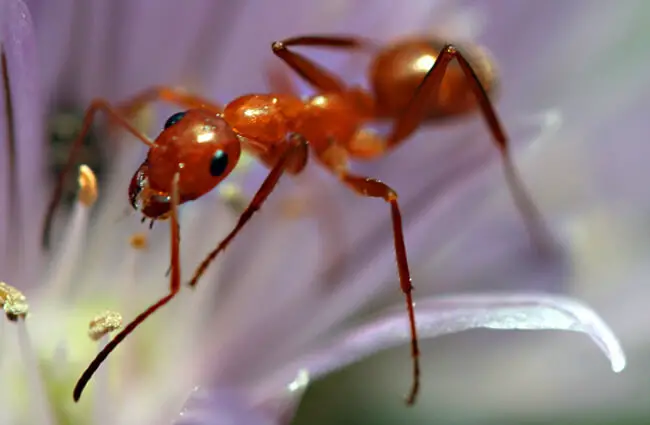
An Ancient Lineage: Arthropod Evolution History
The story of arthropods is one of ancient origins and incredible evolutionary success. Their lineage stretches back over half a billion years, making them one of the oldest and most enduring animal groups.
- Cambrian Explosion: The earliest definitive arthropod fossils date back to the Cambrian Period, roughly 540 million years ago, a time known as the “Cambrian Explosion” when most major animal phyla suddenly appeared in the fossil record. Trilobites, now extinct, were prominent early arthropods that dominated ancient seas for millions of years, showcasing the segmented body and jointed appendages that define the phylum.
- Conquest of Land: While crustaceans remained largely aquatic, other arthropod groups made the monumental leap to land. Myriapods and chelicerates were among the first animals to colonize terrestrial environments, paving the way for the later diversification of insects. This transition required significant adaptations, including modifications to their respiratory systems (like spiracles and tracheae in insects, or book lungs in spiders) and their exoskeletons to prevent water loss.
- Insect Radiation: The evolution of wings in insects, around 400 million years ago, was a pivotal moment, unleashing an explosion of diversity that continues to this day. This innovation allowed them to access new food sources, escape predators more effectively, and disperse widely, leading to their unparalleled success.
The fossil record provides a rich tapestry of their evolutionary journey, revealing how minor changes in body plan and appendage specialization led to the vast array of forms we see today.

The Ultimate Eaters: Arthropod Diet
The dietary habits of arthropods are as varied as their forms, reflecting their ability to exploit nearly every available food source on the planet. This incredible flexibility is a key factor in their ecological dominance.
- Herbivores: Many arthropods are plant-eaters, consuming leaves, stems, roots, nectar, pollen, and fruits. Caterpillars munch on leaves, aphids suck plant sap, and bees collect nectar and pollen. These herbivores play a crucial role in plant population control and nutrient cycling.
- Carnivores: Predators abound in the arthropod world. Spiders are renowned for their web-spinning and ambush hunting techniques, while centipedes are swift hunters of smaller invertebrates. Praying mantises are iconic sit-and-wait predators, and many beetles and true bugs are also predatory, helping to regulate populations of other insects.
- Detritivores and Decomposers: A significant number of arthropods are nature’s clean-up crew. Millipedes feed on decaying plant matter, springtails break down organic material in soil, and dung beetles recycle animal waste. These detritivores are essential for nutrient cycling, returning vital elements to the ecosystem.
- Parasites: Some arthropods have adopted a parasitic lifestyle, living on or in other organisms and feeding off their hosts. Ticks and mites feed on blood or skin, while many insect larvae are internal parasites of other insects.
- Omnivores: Many species are generalists, consuming a mix of plant and animal matter. Ants, for example, are often omnivorous, foraging for seeds, fungi, and other insects.
Their diverse mouthparts are marvels of adaptation, ranging from chewing mandibles to piercing-sucking stylets and siphoning proboscises, each perfectly suited to their specific diet.
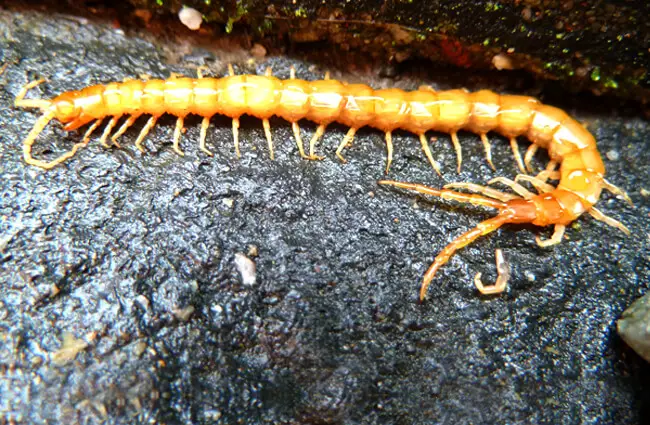
Life’s Cycle: Arthropod Mating and Reproduction
Reproduction in arthropods is a fascinating and diverse affair, encompassing a wide range of strategies to ensure the continuation of their species. Most arthropods reproduce sexually, involving the fusion of male and female gametes, but the methods of courtship, mating, and parental care vary dramatically.
- Courtship Rituals: Many arthropods engage in elaborate courtship displays to attract mates. Spiders perform intricate dances, some insects use pheromones (chemical signals) to draw partners from afar, and fireflies communicate with flashing light patterns. These rituals help ensure species recognition and assess mate quality.
- Internal Fertilization: In most terrestrial arthropods, fertilization is internal to protect gametes from desiccation. This can involve direct copulation or the transfer of a spermatophore (a packet of sperm) that the female picks up.
- Egg Laying: Females typically lay eggs, often in protected locations or attached to substrates. The number of eggs can range from a few large ones to thousands of tiny ones, depending on the species’ reproductive strategy and the level of parental care.
- Metamorphosis: A hallmark of insect reproduction is metamorphosis, a dramatic transformation from an immature larval stage to an adult form.
- Complete Metamorphosis: (e.g., butterflies, beetles, flies) involves four distinct stages: egg, larva (e.g., caterpillar, grub, maggot), pupa (a non-feeding, transitional stage), and adult. This allows the larval and adult stages to specialize in different functions (e.g., feeding vs. reproduction/dispersal), reducing competition between life stages.
- Incomplete Metamorphosis: (e.g., grasshoppers, dragonflies) involves three stages: egg, nymph (a smaller version of the adult, lacking wings and reproductive organs), and adult. The nymphs gradually grow through a series of molts, becoming more adult-like with each stage.
- Parental Care: While many arthropods offer no parental care beyond laying eggs, some exhibit remarkable behaviors. Certain spiders carry their young, scorpions carry their offspring on their backs, and social insects like ants and bees have complex colony structures where many individuals contribute to raising the young.
This diversity in reproductive strategies underscores their evolutionary success, allowing them to adapt to countless ecological niches.
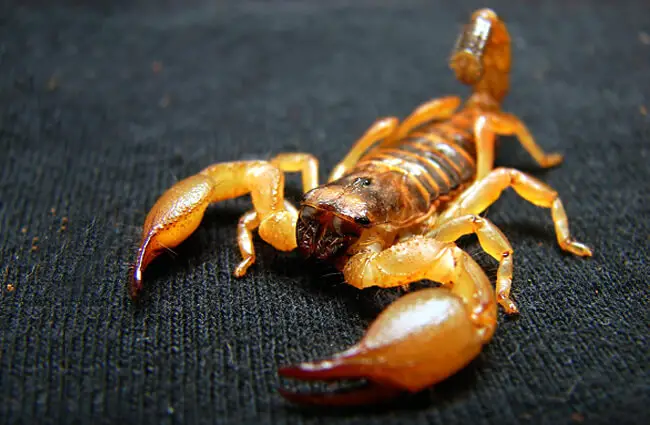
Ecosystem Engineers: Arthropod’s Contribution to Ecosystem and Interaction with Other Animals
Arthropods are not just numerous; they are indispensable. Their contributions to ecosystems are profound and multifaceted, making them true engineers of the natural world and integral to the survival of countless other species.
- Pollinators: Insects, particularly bees, butterflies, moths, and flies, are vital pollinators for a vast majority of flowering plants, including many of the crops humans rely on for food. Without them, plant reproduction would plummet, leading to widespread ecosystem collapse.
- Decomposers and Nutrient Cyclers: Detritivorous arthropods, such as millipedes, springtails, and many beetle larvae, break down dead organic matter, returning essential nutrients to the soil. This process is fundamental for soil health and plant growth.
- Food Source: Arthropods form a critical link in food webs. They are a primary food source for a huge array of animals, including birds, amphibians, reptiles, fish, and mammals. Without this abundant protein source, many higher trophic levels would struggle to survive.
- Pest Control: Predatory and parasitic arthropods play a crucial role in regulating populations of other insects, including agricultural pests. Spiders, ladybugs, lacewings, and parasitic wasps are natural biological control agents, reducing the need for chemical pesticides.
- Soil Aeration and Structure: Burrowing arthropods, like ants and some beetle larvae, help aerate the soil, improving water penetration and root growth. Their activities contribute to the overall structure and health of soil ecosystems.
- Symbiotic Relationships: Arthropods engage in various symbiotic relationships. For example, cleaner shrimp remove parasites from fish, providing a service to the fish while gaining a meal.
Their interactions with other animals are constant and complex, shaping communities and driving evolutionary processes across the globe.
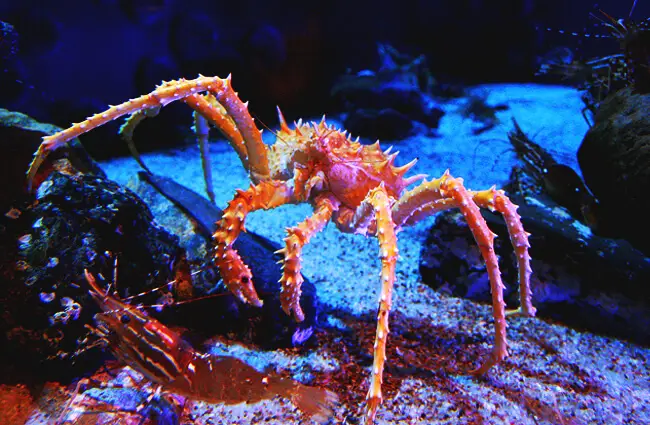
Arthropods and Humanity: From Culture to Coexistence
The relationship between humans and arthropods is a rich tapestry woven with threads of utility, fear, fascination, and cultural significance. These creatures interact with us in countless ways, shaping our history, our health, and our daily lives.
Arthropod’s Contribution to Human Culture
- Food Source: In many cultures around the world, insects and crustaceans are a significant part of the diet. Crabs, lobsters, and shrimp are highly prized seafood. Insects like crickets, mealworms, and ant larvae are consumed for their nutritional value and are gaining recognition as a sustainable protein source.
- Art and Symbolism: Arthropods have inspired artists, writers, and spiritual traditions for millennia. Butterflies symbolize transformation and beauty, bees represent industry and community, and scarab beetles were sacred in ancient Egypt, symbolizing rebirth and the sun. Their intricate forms and vibrant colors are frequently depicted in jewelry, textiles, and literature.
- Medicine and Research: Compounds derived from arthropods, such as venoms or silk, are being investigated for their potential in medicine. Arthropods, particularly insects like fruit flies (Drosophila melanogaster), are invaluable model organisms in genetic and biological research, contributing immensely to our understanding of genetics, development, and disease.
- Products and Resources: Beyond food, arthropods provide valuable resources. Bees produce honey, beeswax, and propolis. Silkworms (the larvae of a moth) produce silk, a luxurious natural fiber. Shellac, a resin secreted by lac insects, is used in polishes and varnishes.
Arthropod’s Interaction with Humans
- Pests and Disease Vectors: This is often the most visible and challenging interaction. Mosquitoes transmit diseases like malaria, dengue, and Zika. Ticks spread Lyme disease and other pathogens. Cockroaches and flies can contaminate food. Agricultural pests like locusts, aphids, and boll weevils cause immense crop damage, threatening food security.
- Beneficial Allies: On the flip side, many arthropods are our allies. Pollinators ensure our food supply. Predatory insects like ladybugs and lacewings help control garden pests, reducing the need for chemical interventions. Decomposers maintain healthy soils.
- Allergies and Stings: Some individuals experience allergic reactions to insect stings (bees, wasps) or to dust mites. Certain spiders and scorpions possess venom that can be medically significant, though fatalities are rare.
Encountering Arthropods in the Wild: Advice for Hikers
For hikers and outdoor enthusiasts, encountering arthropods is a certainty. Most are harmless, but a few require caution:
- Observe from a Distance: The best approach is always to observe without disturbing. Many arthropods are shy and will move away if given space.
- Identify Potential Threats: Learn to recognize common venomous spiders (e.g., black widows, brown recluse in North America) and scorpions in your region. These typically prefer dark, undisturbed places like under rocks, logs, or in crevices.
- Avoid Provoking: Do not attempt to handle or poke unfamiliar arthropods. Most stings or bites occur when an animal feels threatened.
- Check Your Gear: Before putting on shoes, clothes, or picking up backpacks left on the ground, give them a quick shake or inspection, especially in areas known for spiders or scorpions.
- Stay on Trails: This minimizes disturbance to their habitats and reduces your chances of accidentally stepping on something.
- If Bitten or Stung: For most insect stings, clean the area and apply a cold compress. For suspected venomous bites, seek medical attention promptly, and if possible, safely take a photo of the creature for identification.
A healthy respect and understanding of arthropods can turn a potential concern into an opportunity for fascinating observation.

A Zookeeper’s Guide: Caring for Arthropods in Captivity
Caring for arthropods in a captive environment, whether in a zoo, a research facility, or as a pet, requires specialized knowledge and attention to detail. A zookeeper’s role is to replicate their natural habitat as closely as possible to ensure their health and well-being.
- Enclosure Design:
- Size and Ventilation: The enclosure must be appropriately sized for the species, allowing for movement, molting, and natural behaviors. Good ventilation is crucial to prevent mold growth and stagnant air, which can be detrimental.
- Substrate: Choose a substrate that mimics their natural environment (e.g., coco fiber for tarantulas, sand for scorpions, leaf litter for millipedes). It should retain appropriate humidity and allow for burrowing if the species requires it.
- Hides and Climbing Structures: Provide ample hiding spots (cork bark, coconut shells) and climbing opportunities (branches, artificial plants) to enrich their environment and reduce stress.
- Water Source: A shallow water dish with sponges or hydrogel can prevent drowning for smaller species. Some arthropods get sufficient moisture from their food or require misting.
- Temperature and Humidity: These are critical parameters. Research the specific requirements for each species. Use heat mats or lamps with thermostats to maintain temperature gradients. Humidity can be controlled through substrate moisture, misting, and ventilation. Hygrometers and thermometers are essential tools.
- Diet: Provide a diet appropriate for the species, ensuring it is fresh and nutritious.
- Carnivores: Offer live prey such as crickets, roaches, or mealworms, gut-loaded with nutrients.
- Herbivores/Detritivores: Provide fresh vegetables, fruits, or decaying leaf litter.
- Feeding Frequency: Varies by species and age. Overfeeding can lead to health issues.
- Molting Care: Molting is a vulnerable time. Ensure high humidity, provide a secure, undisturbed environment, and avoid handling. Do not remove the old exoskeleton until the arthropod has fully hardened.
- Handling: Minimize handling to reduce stress and the risk of injury to both the arthropod and the handler. If handling is necessary, use appropriate tools (e.g., soft-tipped forceps) and techniques. Always be aware of venomous species and take necessary precautions.
- Hygiene: Regular cleaning of the enclosure is important to prevent bacterial or fungal growth. Remove uneaten food promptly.
- What to Avoid:
- Sudden Changes: Avoid drastic fluctuations in temperature, humidity, or lighting.
- Incompatible Tank Mates: Do not house species together that may prey on each other or compete for resources.
- Pesticides/Chemicals: Keep enclosures away from household chemicals, sprays, and strong fumes.
- Overcrowding: This leads to stress, aggression, and poor health.
- Ignoring Behavioral Cues: Learn to recognize signs of stress, illness, or impending molt.
Successful arthropod husbandry relies on meticulous attention to environmental parameters and a deep understanding of the specific needs of each species.

A Huge List of Interesting Facts About Arthropods
- The largest arthropod is the Japanese spider crab, with a leg span that can exceed 12 feet (3.7 meters).
- Some species of mites are so small that thousands could fit on the head of a pin.
- The total biomass of ants on Earth is estimated to be roughly equal to the total biomass of humans.
- Many insects, like the monarch butterfly, undertake incredible long-distance migrations, covering thousands of miles.
- Some deep-sea hydrothermal vent crabs can withstand extreme temperatures and pressures, thriving in environments toxic to most life.
- The oldest known insect fossil is about 400 million years old.
- A single queen termite can lay tens of thousands of eggs per day throughout her life.
- Scorpions glow under ultraviolet light due to compounds in their exoskeleton, a phenomenon scientists are still fully trying to understand.
- Certain species of mantis shrimp possess incredibly complex eyes with up to 16 different photoreceptors, allowing them to see a spectrum of light far beyond human capabilities, including polarized light.
- Some spiders use silk not just for webs, but also for “ballooning,” where they release silk threads into the wind to travel long distances.
- The bombardier beetle defends itself by ejecting a hot, noxious chemical spray from its abdomen.
- Barnacles, a type of crustacean, are sessile (non-moving) as adults but have free-swimming larval stages.
- The “click” beetle can right itself from its back by snapping a specialized spine into a groove on its underside, launching itself into the air.
The Enduring Legacy of Arthropods
From the smallest dust mite to the largest crab, arthropods are a testament to life’s incredible capacity for adaptation and survival. Their ancient lineage, diverse forms, and critical ecological roles underscore their profound importance to our planet. Whether you are a student delving into their evolutionary past, an animal lover seeking them in the wild, an aspiring zoologist eager to learn, a hiker navigating their habitats, or a zookeeper ensuring their well-being, the world of arthropods offers endless opportunities for discovery and wonder. They are not just creatures to observe; they are the silent architects of our ecosystems, and their story is inextricably linked with our own.

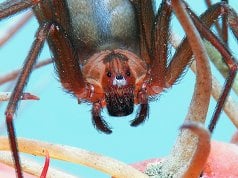
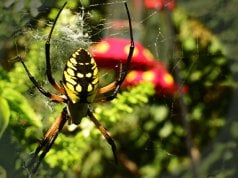



![Red Angus Closeup of a beautiful Red Angus cowPhoto by: U.S. Department of Agriculture [pubic domain]https://creativecommons.org/licenses/by/2.0/](https://animals.net/wp-content/uploads/2020/03/Red-Angus-4-100x75.jpg)

